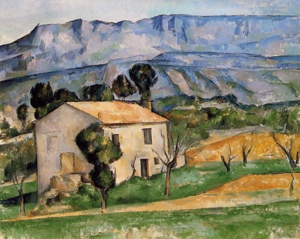Landscape and the Local: A Workshop
Saturday 9 June 2012, 2.00PM to 5.30pm
To be held in K/133, the Kings Manor
Speakers: John Barrell, Tim Clark, Sarah Monks, Anne Wagner
Respondent: Mark Hallett
Workshop convenor: Tim Clark
Admission: Free. It would be helpful if you email cecs1@york.ac.uk to let us know you are attending.

This workshop will explore the question of landscape painting’s commitment to a ‘given spot’. How important to the making of landscape painting was an artist’s immersion in and exploration of a specific territory – a home ground? And how important was (is) that immersion to the landscape painting’s viewers? How much do viewers need to know about a painting’s locality to understand it fully, or appreciate it properly? Are some landscape paintings tied more closely to the given spot than others? Presumably. But are there kinds of belonging to a particular place that get in the way of giving that place aesthetic form? (Ha! The very question!) Equally, are there kinds of non-belonging or half-belonging to the landscape – kinds of aesthetic tourism – that get in the way even more so?
Four people – John Barrell, Sarah Monks, Anne Wagner, Tim Clark – will launch discussion of these questions by talking, each for about 15 minutes, on a painting of their choice. Mark Hallett will be a respondent.
The workshop pursues an argument between Barrell and Clark, begun some months ago at the end of Clark’s lecture, ‘The Bright Side of the Landscape’. The paragraph that provoked disagreement had to do with a painting by Cézanne, ‘House near Gardanne’.

The offending paragraph was the last of the three below:
Fritz Novotny was pointing to something fundamental in Cézanne when he suggested that a key to his painting’s strangeness was simply the section of the visible – the width of vision, even more than the famous non-depth of focus – he seemed now to see as paintable… The painting is not an epitome. The world is intercepted in representation, not gathered in or spread out or arrested at a turn in the road.
Interception… is bound up with a destabilizing of the great metaphor ‘ground’: ground in the landscape tradition being a figure of groundedness, firm footing, good standing, knowing where we are… The field and path in Cézanne are thinned, almost de-materialized; there is no fall of light to solidify them; their slope and extent are perplexing; and their continuity with us – with the imagined place we look on from – more and more a puzzle.
No ground, and no distance. Art historians have labored mightily to find the spot where Cézanne actually put up his easel to paint House near Gardanne, but they have had to admit defeat. And it must be, the sanest of them concedes, having tromped the hills in vain, that Cézanne, wherever he stood, chose to leave out a whole series of intermediate foothills and escarpments, and all but collapse the interval between the house and the mountain. I want to do no more, faced with this typical great fact of Cézanne’s vision, than think it in relation to the previous landscaope tradition – to Koninck and Ruysdael. Distance in landscape is teleology: it opens a way through the world. It is temporality: it puts us again at the start of a quest, or the end of a climb. ‘Meantime we gain the height…’ There is no height in House near Gardanne – never have mountains been less incommensurate with the mid-scale world nearby – and therefore no ‘meantime.’
Barrell spoke up at the time for the art historians, and detected in Clark’s treatment of them the effects of ‘metropolitan taste’, with its automatic condescension to the local. He (like Clark) was an admirer of the poem by Elizabeth Bishop with which the lecture had begun, in which the poet looks at a landscape painting and celebrates the moment when:
Heavens, I recognize the place, I know it!
It’s behind – I can almost remember the farmer’s name. His barn backed on that meadow. There it is,
titanium white, one dab. The hint of steeple,
filaments of brush-hairs, barely there,
must be the Presbyterian church.
Would that be Miss Gillespie’s house?
Bishop’s question will be the workshop’s motto.
Location: K/133, at the King's Manor
